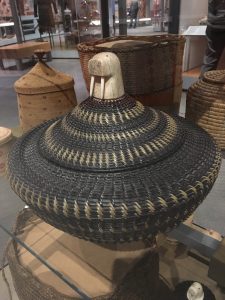A culturally responsive teacher takes the time to really get to know her students, creates a sense of belonging in the classroom, engages students by building on what they already know, and cherishes and celebrates students’ cultural strengths. When I asked the students at camp which area of the camp they would like to see incorporated at school they said they would like to learn more about nature. One student said she thought talking about hunting at school would be awesome because that is something she only really talks about at home. By recognizing our students’ cultural strengths and building on them in the classroom, the material we are presenting is made relevant and interesting. The material becomes more than just something they have to memorize, it becomes something worth doing and worth working toward.
I think taking a literature class to an elementary school to have them read to the younger students would be an opportunity for improvements in self esteem, appreciation of literature, and community engagement. I think taking students to the senior home to have them share some of their written work with their elders could also be a rewarding experience for them too.
___
Scott’s presentation was an exceptional example of a place based lesson plan that allows for collaborative work among staff, students, and community. I especially liked that the students were working up to publishing their work, which gave them an added incentive to prepare their best work.
___
I really appreciated Alberta coming in to offer her guidance on inviting elders and culture bearers into our classrooms. I would like to invite elders into the classroom as much as possible; hence, learning some etiquette for asking elders to share their knowledge was extremely helpful for me. Since I’m guessing our classes will not be able to go outside very much during the school year in Barrow to do activities, inviting elders and culture bearers into the classroom will allow for students to build upon their cultural strengths and build our community as well.
____
I found Ernestine’s visit to be extremely influential. Some of the words she spoke that resonated with me are:
“We spend so much time with these children, but we don’t realize how deep their tapestries are woven.”
“You have to take a stand against colonialism and institutionalism and make a change. You are either fighting it or perpetuating it.”
“You are not going to save them. You are going to believe in them and they are going to save themselves.”
